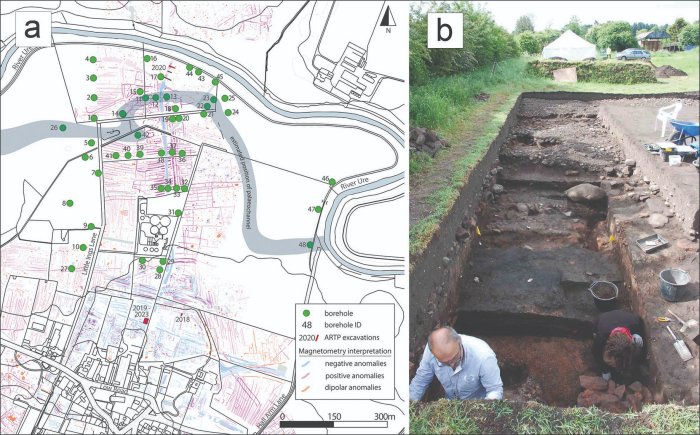Jan Bartek – AncientPages.com – What have the Romans ever done for us? In addition to their impressive architecture, advanced sanitation systems, and extensive road networks, they are credited with introducing large-scale lead and iron production to Britain.
However, the fate of the metal industry following the Roman departure around AD 400 has been largely unclear. It was commonly believed that industrial-scale production dwindled due to a lack of epigraphic evidence for lead exploitation after the 3rd century.
Credit: Pixabay – Public Domain
A recent study has shed light on this mystery by analyzing a sediment core from Aldborough in Yorkshire—a Roman town and metal production hub—revealing that metal production did not immediately decline after the Romans left Britain.
“Not all industrial commodity production ended in the early 5th century though,” states lead author of the research, Professor Christopher Loveluck from the University of Nottingham. “At Aldborough, it is possible metal production expanded steadily using the ores and coal-fuel of the Roman period.”
Researchers from the Universities of Cambridge, Nottingham, and other UK institutions conducted an analysis to test this hypothesis. They examined a five-meter-long sediment core extracted from Aldborough in Yorkshire, which was historically known as the Roman tribal town of the Brigantes and served as a significant metal production center.
“This core has provided the first unbroken continuous record and timeline of metal pollution and metal economic history in Britain, from the 5th century to the present day, at the heart of a major metal-producing region,” says Professor Loveluck.
Plan showing features detected by geophysical survey and the location of boreholes and excavations undertaken at Aldborough; b) the Roman metal-working complex under excavation in 2021. Credit: Antiquity. https://doi.org/10.15184/aqy.2025.10175
Their research reveals that metal production in Britain persisted well beyond the end of the Roman era, around AD 400, and only experienced a significant decline between AD 550 and 600. Although there is no conclusive evidence explaining this downturn, historical records and DNA analysis suggest that Europe was afflicted by the bubonic plague during this time, likely impacting economic activities.
Crucially, these findings demonstrate that there was not a complete financial collapse after the Romans departed. This challenges the common perception of post-Roman Britain as a “Dark Age” where production reverted to pre-Roman levels. Additionally, following this period, metal production experienced numerous fluctuations linked to various historical events, such as Henry VIII’s Dissolution of the Monasteries.
“It became uneconomical to make fresh metal because it was ripped off all the monasteries, abbeys and religious houses,” Professor Loveluck explains. “Large-scale production resumed in the later 16th century to resource Elizabeth I’s Spanish and French wars.”
See also: More Archaeology News
Overall, these findings show the early economic history of Britain is much more complex than previously assumed. For the first time, we can examine long-term changes in British metal production in relation to major historical events.
“The results offer a revolutionary new insight into the economic history of Britain, which contradicts previous thought that all industrial-scale commodity production collapsed at the end of the Roman period,” concludes Professor Loveluck.
The study was published in the journal Antiquity.
Written by Jan Bartek – AncientPages.com Staff Writer



